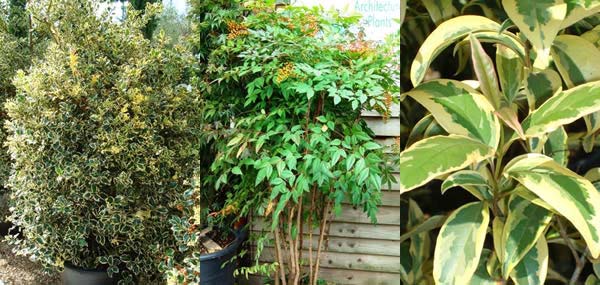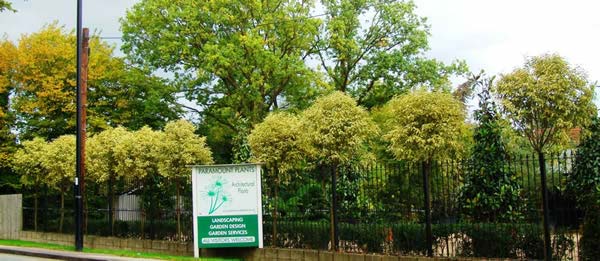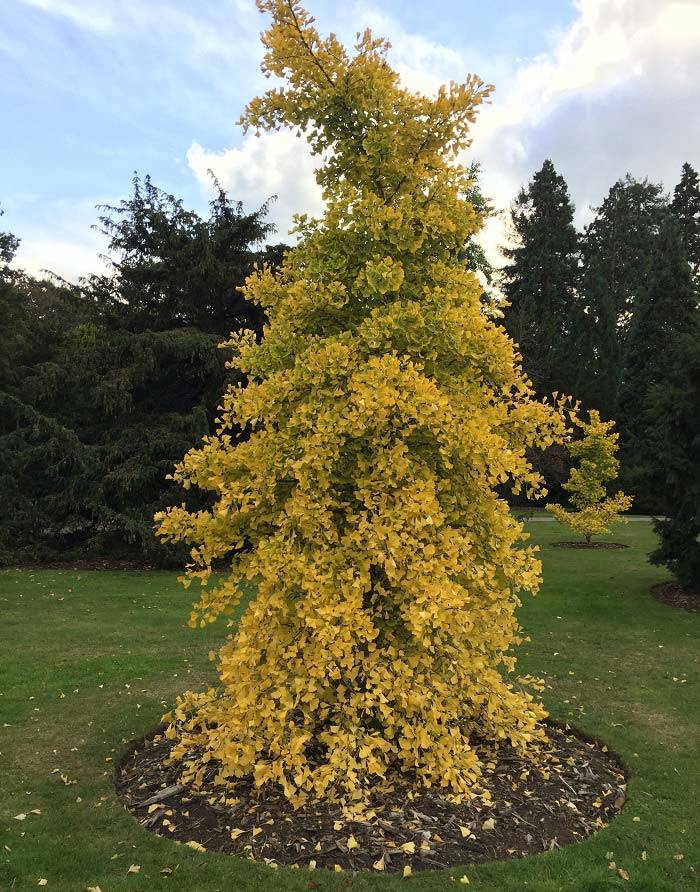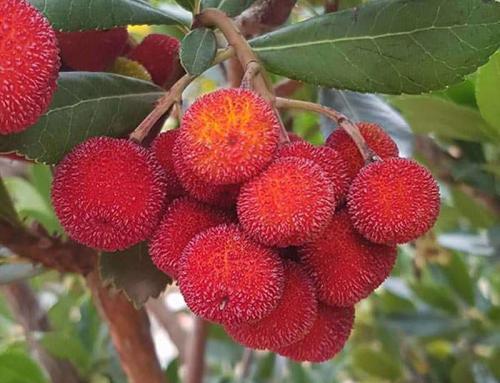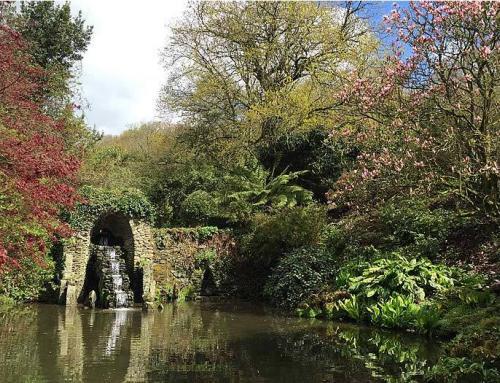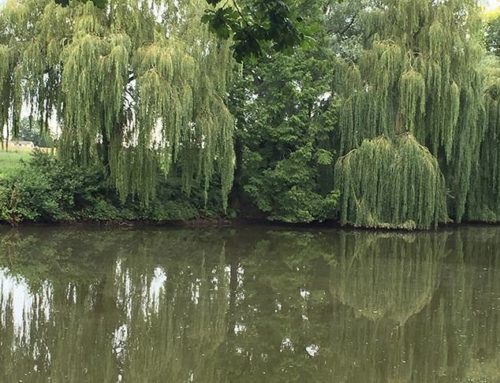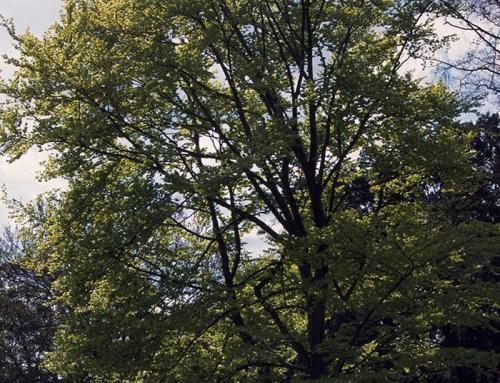Autumn is nature’s planting time. We originally selected 10 trees and shrubs that we consider most vibrant and useful for autumn/winter interest. And over time, we have added a few more that will provide superb autumn colour. This blog is now a comprehensive list of some of the best autumn showstoppers. We hope it helps inspire you on your quest for autumn colour.
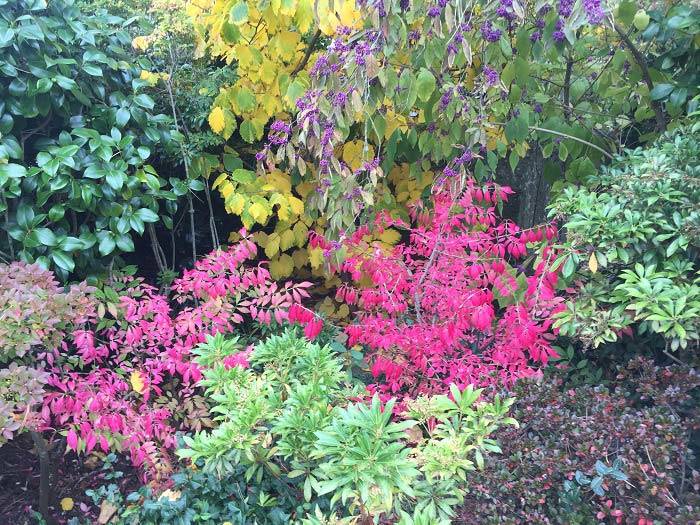
Medley of Vibrant Autumn Colour – including Euonymus Alatus and Callicarpa in full purple berry
Some of these trees and shrubs listed are evergreen (keep their leaves), others are deciduous (lose their leaves in winter), but they are all very hardy and all have stunning foliage, stems or berries for a wonderful appearance even in the coldest months of the year:-
- Ilex Aquifolium Argentea – Variegated Holly
- Ligustrum Japonicum Variegated – Evergreen Japanese Privet
- Nandina Domestica – Heavenly Bamboo Shrub
- Acer Palmatum Dissectum Garnet Tree
- Loropetulum Chinense Fire Dance
- Pyracantha Angustifolia Tree – Firethorn
- Cornus Sanguinea Winter Beauty – Orange Dogwood
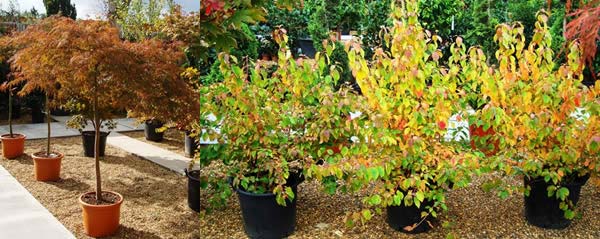
Acer Palmatum Dissectum Garnet Tree | Cornus Sanguinea Winter Beauty, Orange Dogwood
- Liquidambar Styraciflua – The American Sweet Gum Tree
- Prunus Amanogawa – Japanese Flowering Cherry
Planting in Autumn & Winter – if trees and shrubs are planted ideally between September and December, then they require minimal maintenance. The roots will take well while the soil is still warm and moist and autumn planting allows the plants to settle in before the more extreme weather conditions, which generally start around mid December through to end of January. This is not to say that plants cannot be planted at other times of the year – but when planted in autumn, they require minimal attention. Watering will not be necessary once the weather cools consistently around October (unless we have a heatwave in the winter!). The plants will then remain dormant from October through to March.
Once the weather warms up significantly in spring, usually around end of March, then the roots of trees and shrubs planted in autumn have already had an opportunity to settle in during these cold months and the plants will then flourish and establish quicker than if they had just been planted in Spring. Also they will not be stressed by extreme changes of weather which can be common in spring. So if you are considering planting new trees and shrubs think about planting in autumn – it will make life a little easier….
Which are the best Plants for Autumn Colour in the Garden that may not be so well known?
It is widely acknowledged that Japanese Acers are at their most spectacular at this time of the year with their flamboyantly coloured foliage. Barberry also springs to mind, particularly the spectacular new variety Berberis Thunbergii Orange Rocket which turns ruby red in autumn. The brightly coloured flower buds of evergreen Skimmia emerge in autumn and go on to produce highly decorative red berries which last throughout the winter. Our native English Holly comes into its own as the evenings shorten and its pretty berries delight the birds.
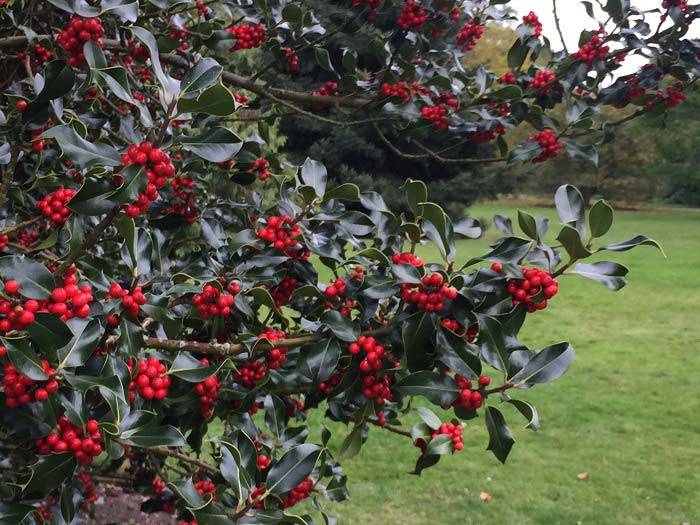
English Holly in Autumn
Let’s take a closer look at some perhaps less well known individual varieties of Autumn Plants for Colour in the Garden, each one spectacular in its own right.
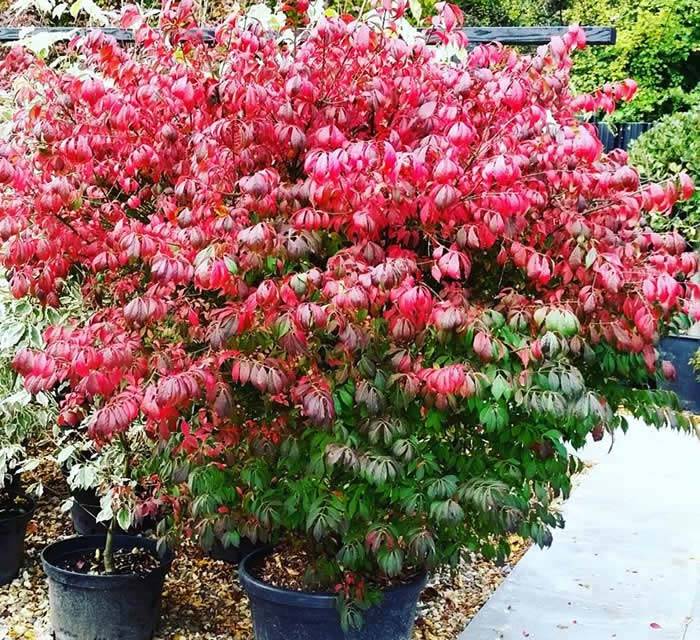
Euonymus Alatus Compactus (Compact Winged Spindle Tree or Burning Bush)
Euonymus Alatus Compactus
More commonly known as the Compact Winged Spindle Tree or Burning Bush, this is possibly one of the very best autumn plants for colour with its fiery foliage. Euonymus Alatus Compactus is a deciduous, compact growing shrub that will also do well in containers. Pictured Above!
Acer Palmatum Sango Kaku
For soft golden yellow autumn colour, Acer Palmatum Sango Kaku with its elegant lobed foliage is a good choice. It also has unusual reddish-pink stems in the winter months, making this ornamental tree a top choice for year-round interest. Suitable also for smaller gardens.
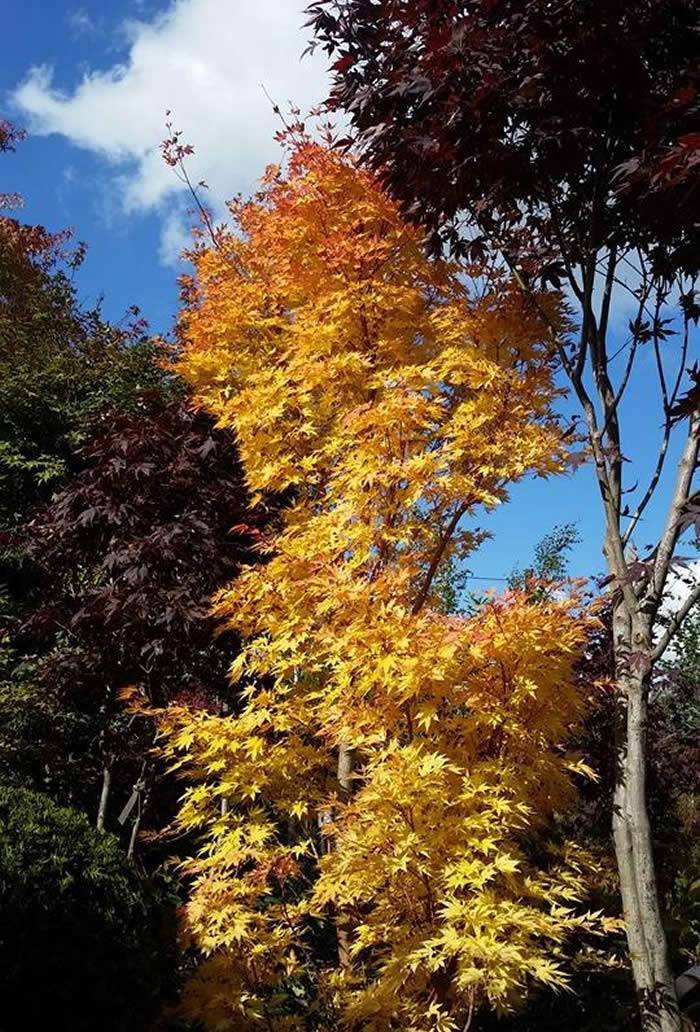
Mature Specimen tree, Acer Palmatum Sango Kaku – bright yellow foliage for Autumn
Acer Griseum
This is the Paper Bark Maple. A variety of Japanese Acer, in autumn its green foliage takes on hues of yellow, turning to orange and finally dark red. Added winter interest comes from the almost parchment-like, peeling light brown bark. As it won’t get overly large, this decorative Acer is suitable for smaller gardens. More Trees with Ornamental Bark…
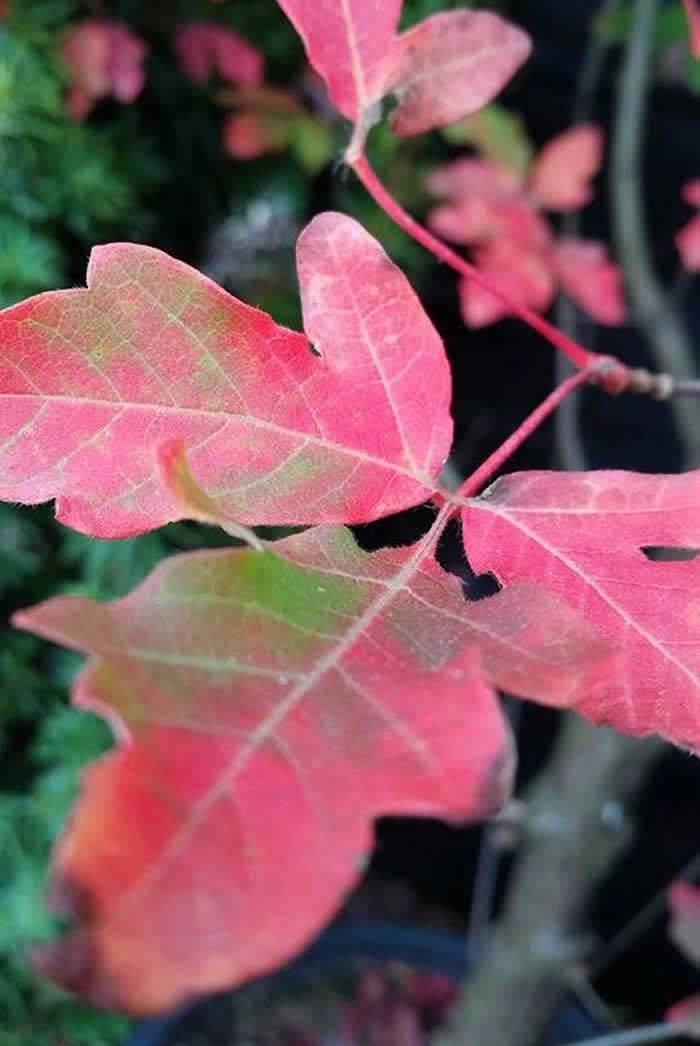
Autumn Plants for Colour – Acer Griseum or Paper Bark Maple
Davidia Involucrata
Sometimes called The Handkerchief Tree, it is perhaps best known for its beautiful white flower-like bracts. However, the autumn beauty of Davidia Involucrata is considerable as its romantically heart-shaped light green foliage changes to a purple / orange / red.
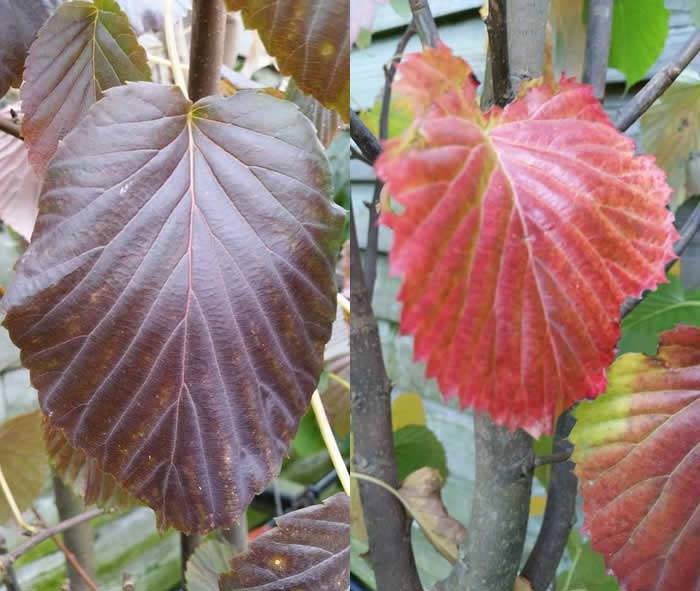
Davidia Involucrata (the handkerchief tree)
Cornus Controversa Variegata
The Wedding Cake Tree has variegated green and cream foliage which becomes a most dramatic purple and red in autumn. This particular Cornus tree is very compact and will reach a maximum of 3 metre height and spread.
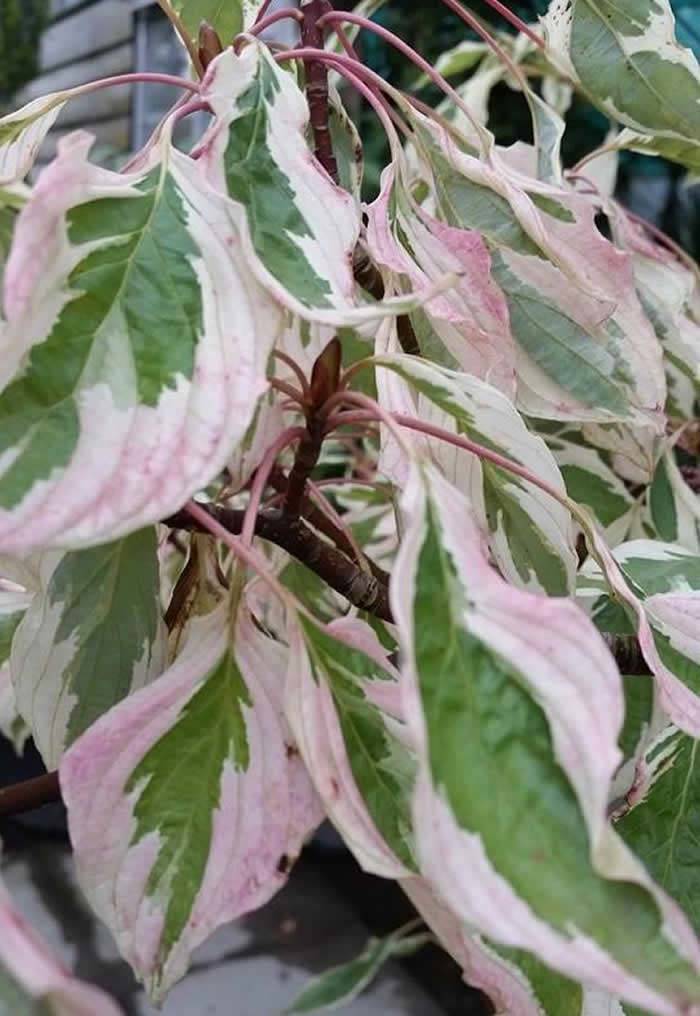
Variegated Cornus Controversa, a good choice for Autumn Colour
Autumn Colour Ideas & Combinations
By putting a little thought into choosing which plants to partner up when creating an autumn bed, it is possible to achieve instant colour as well as architectural depth. Think about mixing plants which are mainly evergreen with deciduous trees (always stunning at this time of the year) along with lower growing shrubs and decorative grasses. We especially like combining ornamental grasses, nandinas and Japanese Acers. Here are some ideas for striking autumnal bed planting combinations.
Ferns, Pines, Andromeda and Acers:
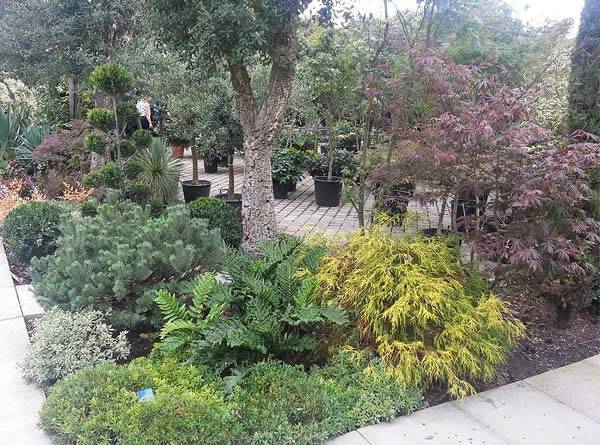
Ferns, Pines, Andromeda and Acers create a variety of colours, textures, shapes and sizes
A relatively mature tree is surrounded with a variety of colours, textures, shapes and sizes. This is achieved by planting Acers on one side (to the right of the image) with pines on the other. Ferns take a central position with the handsome evergreen Andromeda (Pieris Japonica or Bog Rosemary) creating a foundation to the front.
Nandina and Buxus Globes:
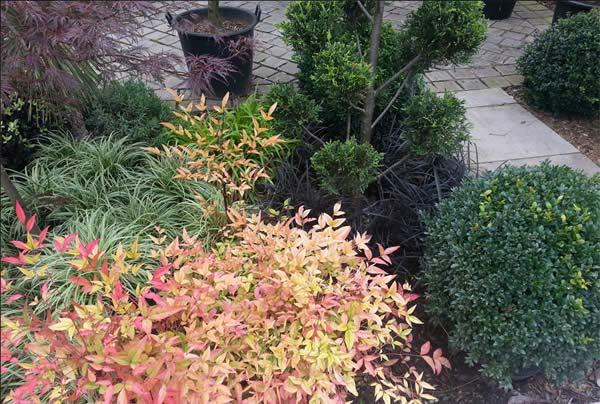
Nandina and Buxus Globes provide colour and structure that is ideal for Autumn beds
Nandina Domestica, is a slow growing evergreen shrub with colourful foliage. The colour of the Nandina foliage combines very well with the rich green leaves and structured shape of Ilex Crenata globes. Add some decorative grasses for extra impact and diversity .
Picea, Yucca, Nandina, Aucuba and Acers:
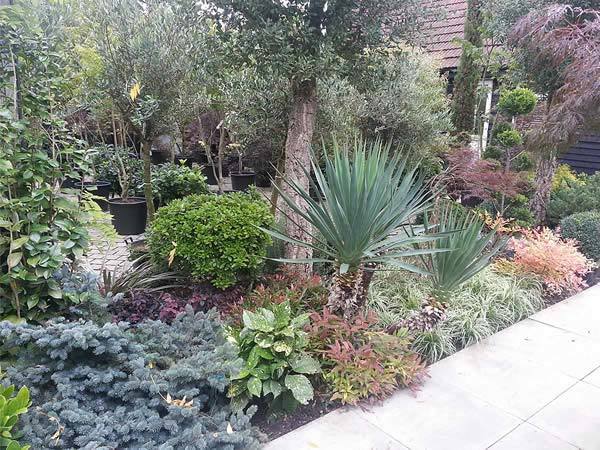
Picea, Yucca, Nandina, Aucuba and Acers
Using mature trees as a background, this combination brings a variety of structures, textures and autumn colour to the border. To the right, an Acer Bloodgood marks the border, with added colour and height diversity created using Nandina Domestica and ornamental grasses. The upright Yucca trees strikingly mark the centre of the bed. Aucuba Japonica (Spotted or Japanese Laurel) adds a softer texture and added interest through its variegated foliage. The end of the bed is beautifully marked with Picea Pungens Globosa (Colorado Spruce), a low growing compact conifer. Its evergreen blue foliage makes a striking contrast to the Nandina Domestica and the red of the Acer Bloodgood.
Autumn Berries:
Already, the birds are enjoying the berries and we are enjoying the beautiful shades & diversity of the autumnal garden. Pyracanthas are evergreen climbers & produce fragrant tiny white flowers in summer followed by beautiful orange berries in autumn. A good choice is Pyracantha Firethorn which carries the RHS Perfect for Pollinators badge. Here, the pyrachantha beautifully frames a stone wall and being a prickly, usefully keeps intruders on the far side.
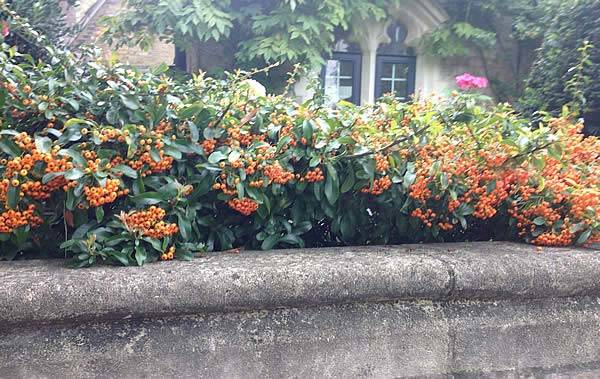
Stunning Pyracantha, laden with bright orange berries – spectacular autumn colour
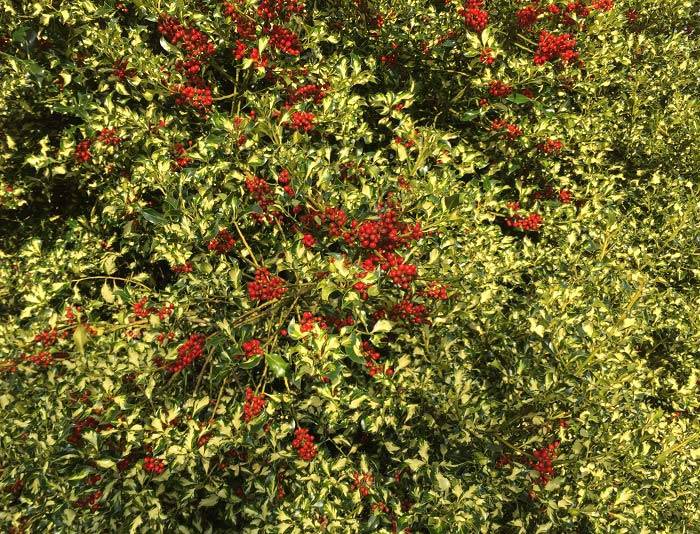
Stunning variegated holly bush comes alive in autumn

